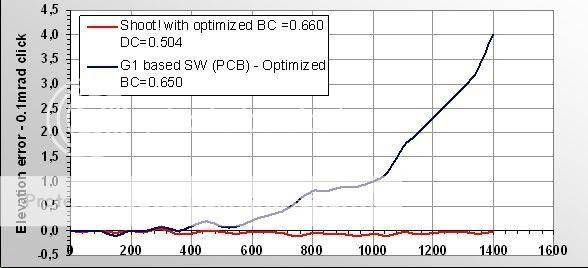Mikecr
Well-Known Member
I bought a Toshiba E800 PPC a while back(when they were top dog) and ran Exbal on it. But unfortunately, it was obsolete before getting it home. No batteries, and Windows Mobile sucked completely in it. I also had a very difficult time seeing the screen in the field.
Anyway, I have since gone to a 'click card' system that I print out and carry in my back pocket.
This has range increments, clicks of elevation, and hold-off(inches) per full 5mph wind.
3 columns, laminated on a ~3x5.
It's caveman, I know, but has worked well to 600yds. I stalk within that range because I know I'm 1/2moa to it.
Something on this order could include combined coriolis and spindrift in another 'hold-off' column.
Hold-offs could also be in MOA for those who dial it(I only dial elevation).
Elevation could be in MOA as well, but really, I just want to know how many clicks from zero, and how many inches hold-off this will take.
One things for sure; In the field we don't need 'drop', but correction.
Anyway, I have since gone to a 'click card' system that I print out and carry in my back pocket.
This has range increments, clicks of elevation, and hold-off(inches) per full 5mph wind.
3 columns, laminated on a ~3x5.
It's caveman, I know, but has worked well to 600yds. I stalk within that range because I know I'm 1/2moa to it.
Something on this order could include combined coriolis and spindrift in another 'hold-off' column.
Hold-offs could also be in MOA for those who dial it(I only dial elevation).
Elevation could be in MOA as well, but really, I just want to know how many clicks from zero, and how many inches hold-off this will take.
One things for sure; In the field we don't need 'drop', but correction.

